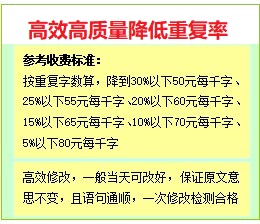一个关于论语的文化翻译研究(四)
It is said that Confucius taught while traveling and had more than 3000 disciples in different states. Of the some 3000 disciples there are seventy-two disciples recorded to be famous ones. They were of different birth, had different positions and more importantly, were of different virtues. Each of them had a unique name, so it is helpful if the audiences can understand them.
Those who were mentioned many times in The Analects could be very important for Confucian school in different ways. In this case, different translators use various methods to translate their names.
Eg2: 子曰:“吾与回言终日,不违,如愚……”
曾子曰: “吾日三省吾身。”
有子曰: “礼之用,和为贵。”
Three of Confucius’ favorite disciples--- “回”(hui), “曾子”(zengzi), and “有子”(youzi) appeared in these examples.
One method used for rendering Confucius’ disciples’ names is to transliterate in Pinyin according to their pronunciation. For example, “子夏” as “Zixia”. Here “回” refers to “颜回”, styled 子渊,so it can be rendered as “Yen Hui” or “Hui”. This kind of communicative translation confirms the tradition of western people, to call others name directly, without consideration of their status. To western reader, it is easier for them to remember and understand.
The disciples ranked with “子” are translated as Master Yu/You “有子”, and Master Tseng/Zeng “曾子”, in respect who were Confucius’ prominent disciples and later became significant teachers in the Confucian school after Confucius’ death. This semantic translation, which was adopted by many translators, is regarded as the most suitable one. While in some other version, “有子” and “曾子” are translated as “The philosopher You” and “The philosopher Zeng”. These two methods more accord with Chinese tradition, using semantic strategy to reproduce the polite image of Chinese people.
3.2 Translation of Cultural Images
Cultural image is an integrative part of cult ure. All the images connected with social and religious culture such as a special thing, an allusion, an animal etc will challenge translators. A cultural classic such as The Analects is abundant with cultural images, so how to transfer them or transfer their meanings is a vital problem. And now, we will discuss from the image of religious culture.
3.2.1 Religious Cultural Images
Eg5: 子入太庙,每事问。
Version1: The Master, when he entered grand temple, asked about every thing.
Version2: When Confucius first attended the service at the State Cathedral (Ancestral Temple of the reigning prince), he enquired as to what he should do at every stage of the service.
Version 1 abided by semantic translation that rendered “taimiao”(太庙) into “grand temple”, which retained literal meaning as well as extended some cultural message to the target audience. While version 2 turned to communicative translation that employed “Great Cathedral” with strong color of Western religion, in which Western religion took the place of ancient Chinese tradition. “Great Cathedral” is totally different from “taimiao”, which, in ancient China, is the state temple for the first reigning emperor. This image implies the ancestor of our Chinese people. This is one of the most obvious and controversial characteristics of version2, that is, it regards Confucianism as a religion, Ku said, “Confucianism, without being a religion can take the place of religion. Therefore, there must be something in Confucianism which can give to the mass of mankind the same sense of security and permanence which religion affords them.” (Ku Hunming, 1998:23) In his opinion, Confucianism is of the same value as Western religious sayings but not the same nature.
In a sense, the grand temple and the State Cathedral, although both refer to religious places, are different because the former in the sacrificial to the ancient people and the latter the Christian religion. The use of the latter would not a rouse the foreignness of the text but derives readers’ attention to Western custom of being loyalty to Gods, instead of Chinese tradition of showing respect to the ancestors.
文档出处(作者):胡龙青 林雪颖
3.2.2 Social Cultural Images
Eg6: 孟懿子问孝。子曰:“无违。”
Version1: Meng Yi asked what filial piety was. The Master said, “It is not being disobedient.”
Version2: Meng Yi asked about the treatment of parents. The Master said, “Never disobey!”
Version1 obeyed semantic translation theory, translating the cultural image xiao(孝)as “filial piety”, while version2 is much simply, just communicatively rendered into “the treatment of parents”. As one aspect of social ritual at that time, xiao is honored by Chinese people as a traditional virtue for thousands of years. As an old sayings goes, “Filial piety ranks the first of all virtues”, being xiao is not only referring to the behavior of serving the parents, but also implying to piety and respect in ones heart. Xiao has been endowed with profound culture and moral meaning, deeply rooting in Chinese people’s mind. Thus, it is quite accurate to annotate xiao as “filial piety” to review the specific cultural connotation.
Version2 dealt with the word in a so simple way that loses part of original meaning. Plain words would not catch readers’ eyes to raise their attention. The Western readers could not understand the vital importance of this cultural image to the whole passage.
3.3 Translation of Numbers
一个关于论语的文化翻译研究(四)由免费论文网(www.jaoyuw.com)会员上传。


